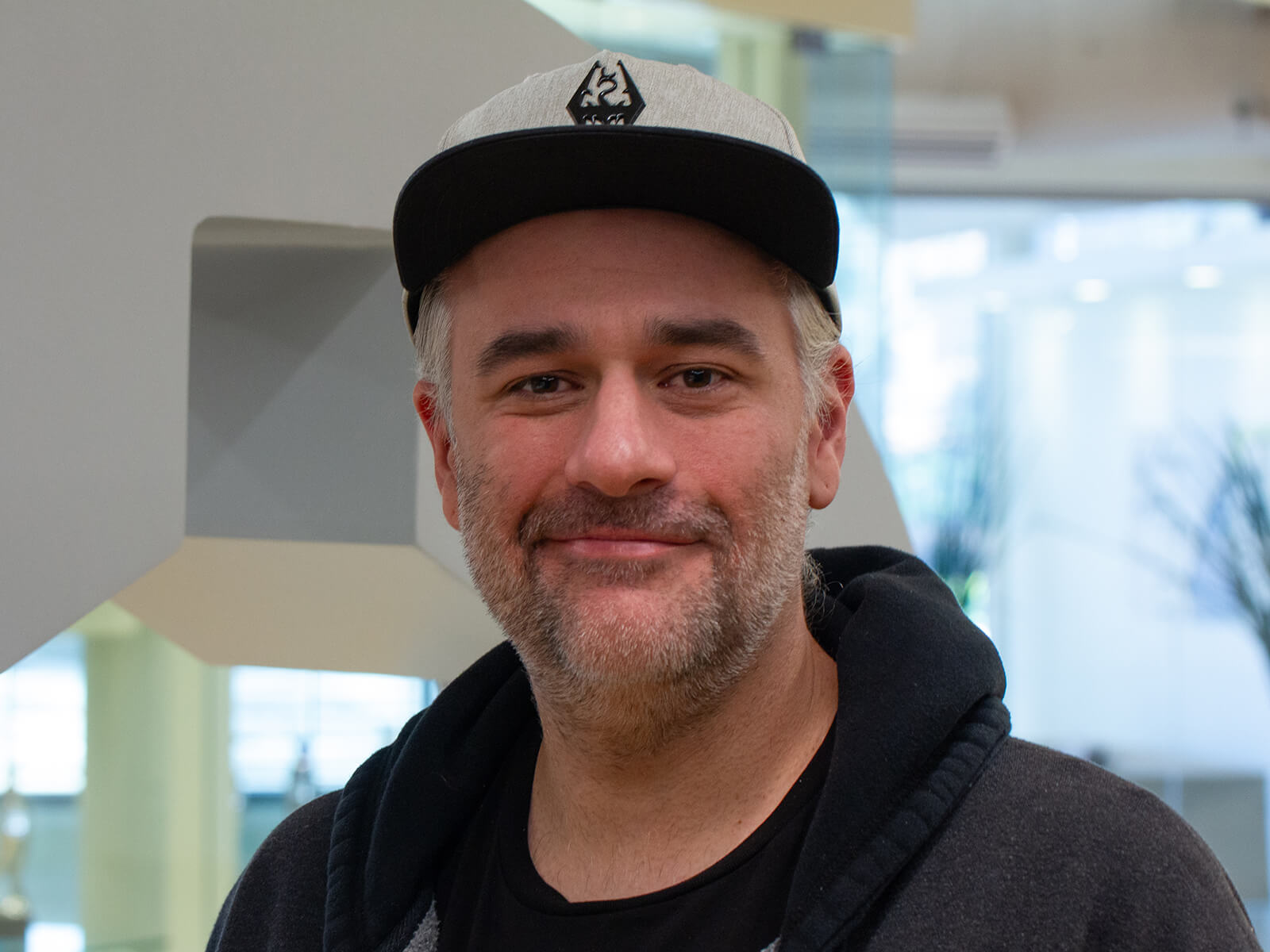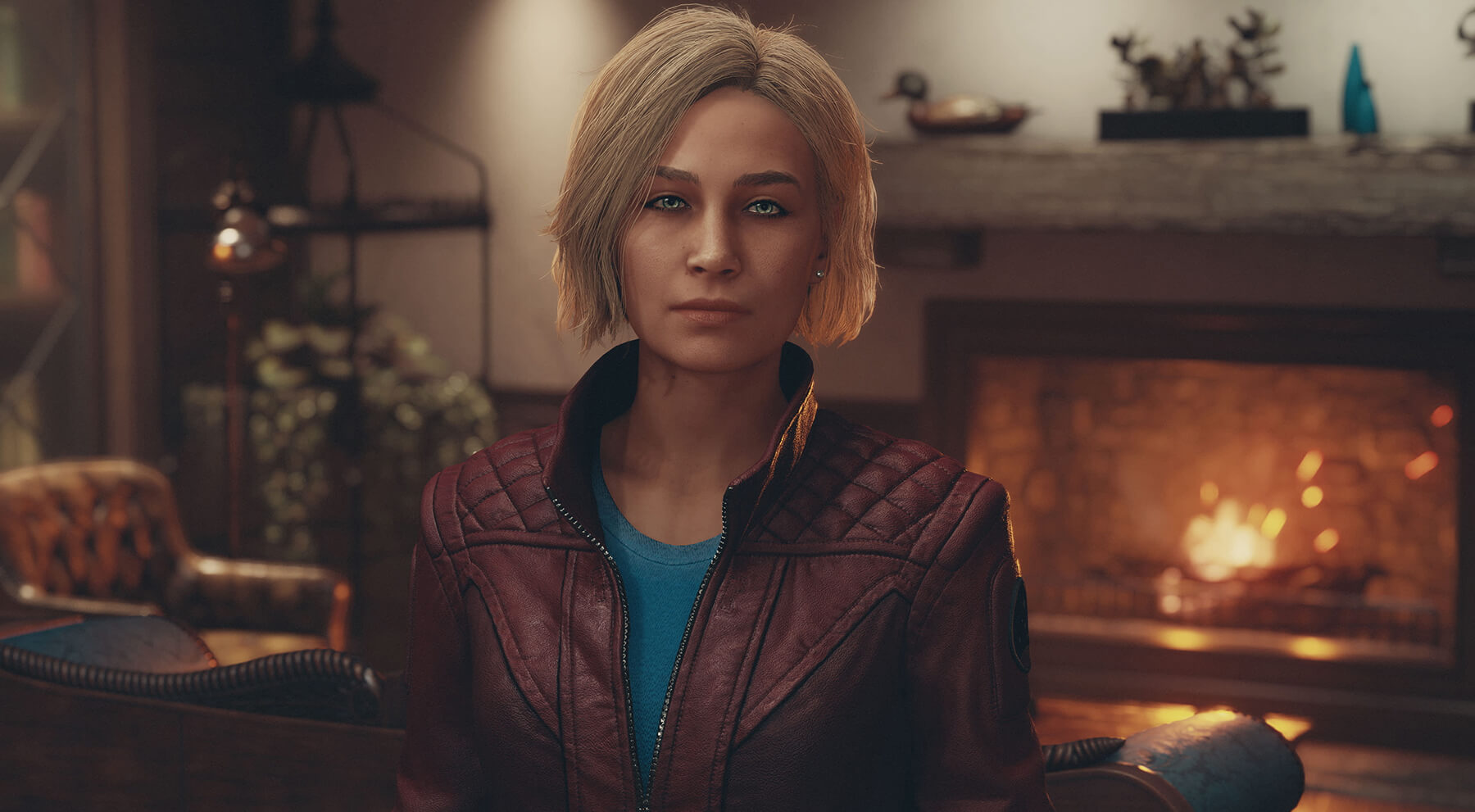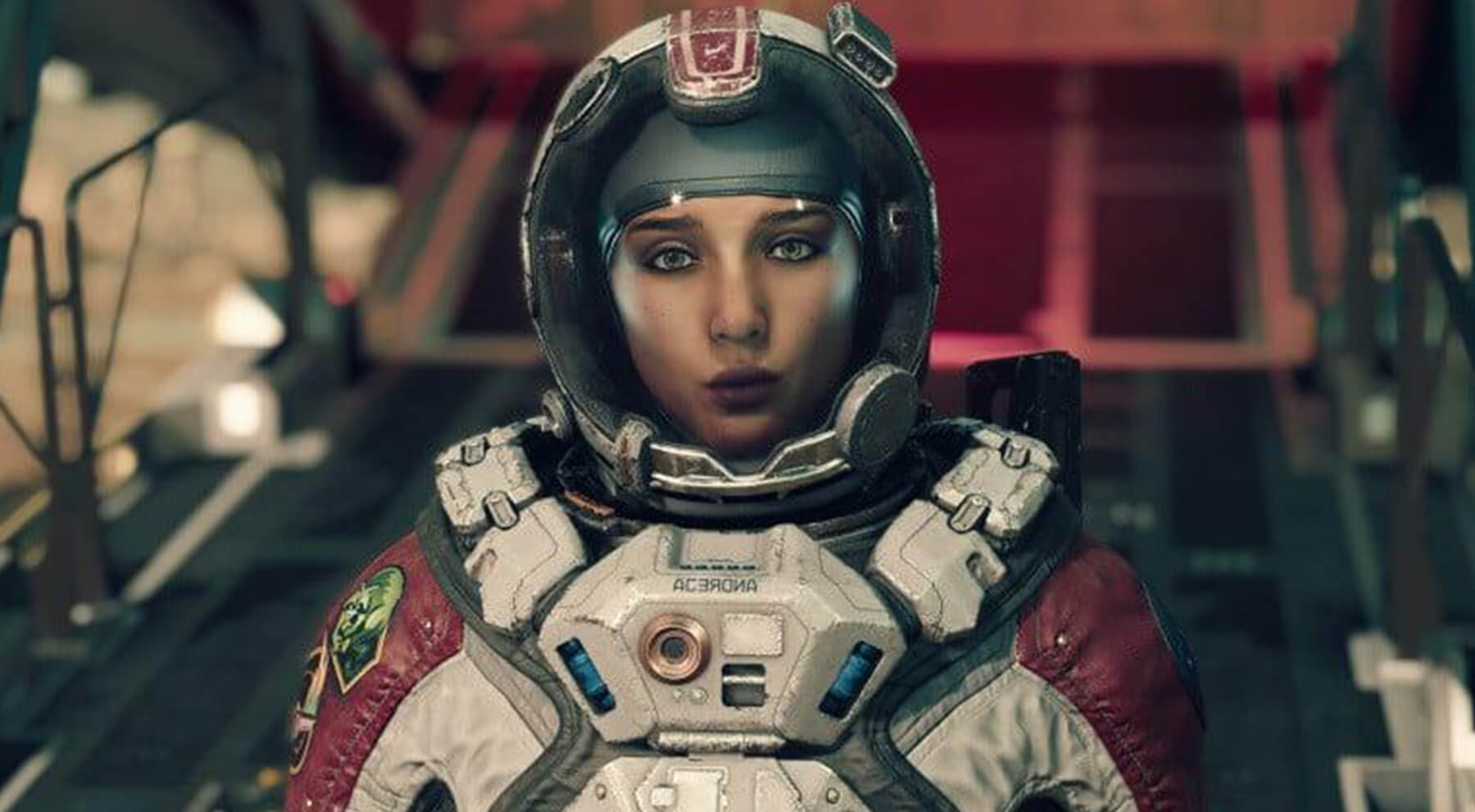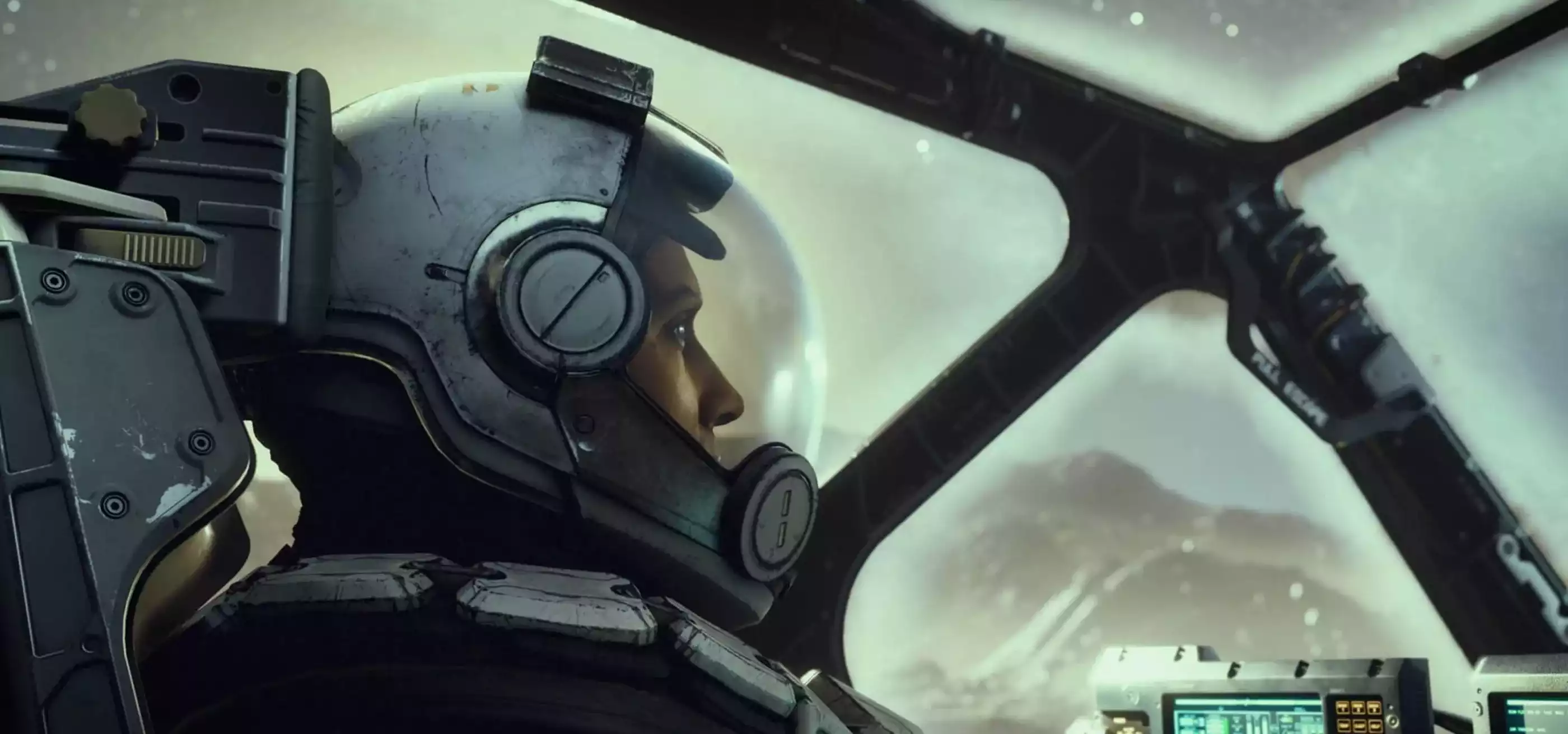Early in the development of Bethesda Game Studios’ new space exploration epic, Starfield, systems programmer Anthony Saulls traveled with his coworkers to visit some people the studio thought might have some helpful insights on outer space — NASA.
“We went to the Goddard Space Flight Center in Maryland and watched them assemble the James Webb telescope in this crazy amazing, giant elaborate room,” the DigiPen BS in Computer Science in Real-Time Interactive Simulation graduate recalls. “We talked with one of the world’s foremost heliophysicists and one of the people who took the first high-resolution pictures of the moon.”
Dubbed a “NASA-punk” game, Bethesda’s enormous sci-fi RPG has dazzled players with its stunningly faithful reproductions of real astrological phenomena. Featuring over 1,000 traversable planets, Starfield’s scope goes beyond the open-world genre to create an experience more accurately categorized as “open universe.” While Saulls did spend some time during production working with physics, his chief contributions to the game weren’t space-related, but rather face-related. “My DNA is in every face in Starfield,” Saulls says. “I put my heart, soul, and thousands of hours into the characters.”

Through developing student games at DigiPen, Saulls discovered early on that he had a distinct predisposition as a programmer. “I’m the kind that always gravitates towards the problems,” Saulls says. “At DigiPen, you get into this habit of finding all your failure cases as rapidly as possible so you can start finding solutions. That’s how we operate at Bethesda too.” Being the famed Elder Scrolls and Fallout developer’s first new intellectual property in 25 years, Starfield presented lots of new problems for Saulls and the studio to solve.
For Bethesda artists, one major issue was populating the game’s massive universe with characters. “When you hit a certain level of content in a larger game like this, artists can’t necessarily go in and create specific heads for each of these thousands of NPCs,” Saulls says. Finding a solution to that problem presented even more problems. “For one, I didn’t want all the NPCs to look like they were related,” Saulls says, especially given the high graphic fidelity the studio had dedicated itself to on the title. Saulls also had to consider Bethesda’s longstanding dedication to its modding community as well. “We’ve hired our modders!” Saulls says. “Bethesda has always promoted a healthy community for creating and adding content in our games. That’s always been important.”
Through some clever engineering, Saulls helped Bethesda elegantly solve each of those problems by building what he describes as a complex “Lego set” for artists to use when creating NPC faces, one that players also have access to from the get-go through the character creation screen. “Most studios spend many hours in external art tools creating heads for their main characters and then importing them,” Saulls says. “With us, every NPC face in Starfield was made and imported using the game’s own character customization tool. When our artists are making faces, it’s the same code that runs when you go to the character creation menu as a player.” Although players are presented with a “massaged” version of the tool, simplified for the average person’s needs, they can still access the in-depth facial customization abilities Starfield artists used to craft the thousands of heads in the game.
Saulls’ next challenge was ensuring that any face authored through the tool would animate correctly. “Played end-to-end, there’s probably something like four days-worth of dialogue in this game. It’s wild,” Saulls says. Rather than studying astronomy, he found himself diving into the science of linguistics and facial morphology instead, digging into new topics like fricatives, saccades, and nasolabial folds. “You have to make sure all these Lego pieces can seamlessly blend together to deliver all these lines of dialogue, display emotion while doing it, and realistically track movement with their eyes,” Saulls says. “There’s this huge, deep array of things the face has to do, and if one thing doesn’t work, the illusion is broken.”

Saulls’ calls the team’s achievement on the facial customization tool “one of the proudest moments of my career,” not just because it worked, but because of all the extra details on top. For one, players might notice that zooming in on faces makes the graphic fidelity go up, rather than down. “You can pick any NPC, zoom in, and see all the microgeometry on their face, pores, facial hair, stubble. Their eyes will look amazing. The level of detail is crazy, especially on a game of this scale where people are wearing space helmets 90% of the time,” Saulls laughs.
Those helmets are also a particular pride point for Saulls, the culmination of a long personal journey. An avid Bethesda fan for most of his life, Saulls remember booting up The Elder Scrolls V: Skyrim back in 2011 and eagerly creating his own character. “I spent all this time picking out the haircut and facial hair, and then as soon as I put a helmet on, it all disappeared!” he says. “It wasn’t the end of the world, but I remember thinking it was such a bummer.”
Fast forward one decade, and Saulls found himself in an extremely rare position. “I’m sitting there realizing that I’ve worked my way up to get hired as a developer at this studio, and suddenly, I’m in a position to fix this problem that bugged me 10 years ago as a player!” Saulls says. “We made sure all our hair conforms to our wearables, so big beards will push up realistically if you put a space helmet on, and your hair will react correctly to headwear.”

Now that the game has shipped, players and critics have been hailing Starfield for its stability, a common refrain online being that it runs “smooth as butter” across the PC and Xbox Series X|S. For his part, Saulls credits his DigiPen education in helping him achieve that stability on such a complex, large-scale title. “Learning lower-level programming early on is huge. DigiPen’s approach to teaching C and C++ is such that you have a much more fundamental understanding of what the language is actually doing to the hardware,” Saulls says. “Without that, you can’t really engage in efforts to promote usability, stability, and performance in a game this large, especially on various platforms.”
Seeing streamers and players excitedly share their character creations post-release has left Saulls “beaming with pride.” “It’s so important to me that people are able to project themselves and the ideation of who they want to be into the game,” he says.
Now that he’s become something of a maverick at the character creation tool himself, he’s been projecting his family and friends into Starfield too. “I made my father-in-law in the game the other day and sent him a photo,” Saulls laughs. “Sometimes my wife will sit there with me on the character creation screen and go, ‘Oh, make this person!’ Just because I know the tool so well.”
